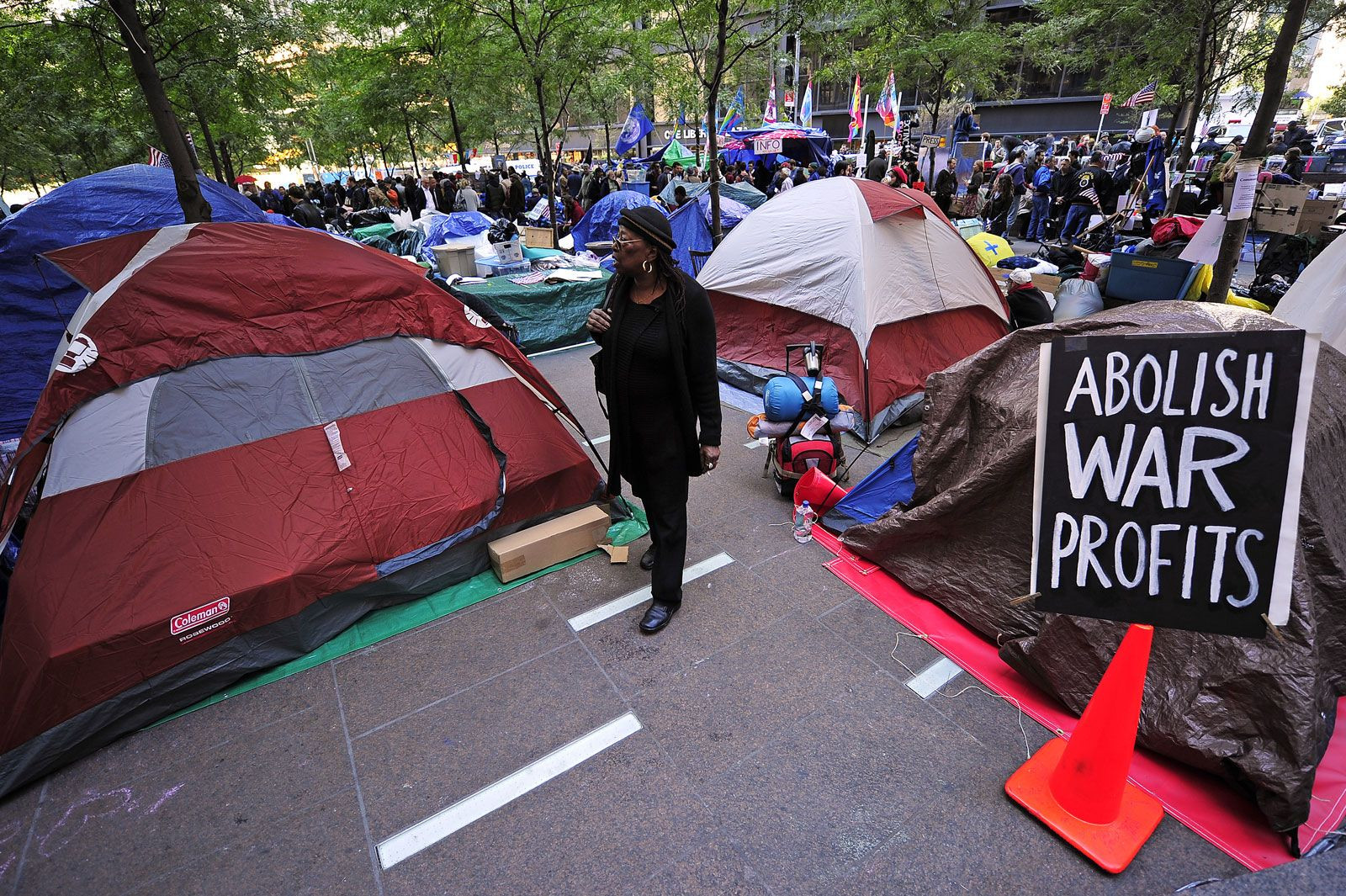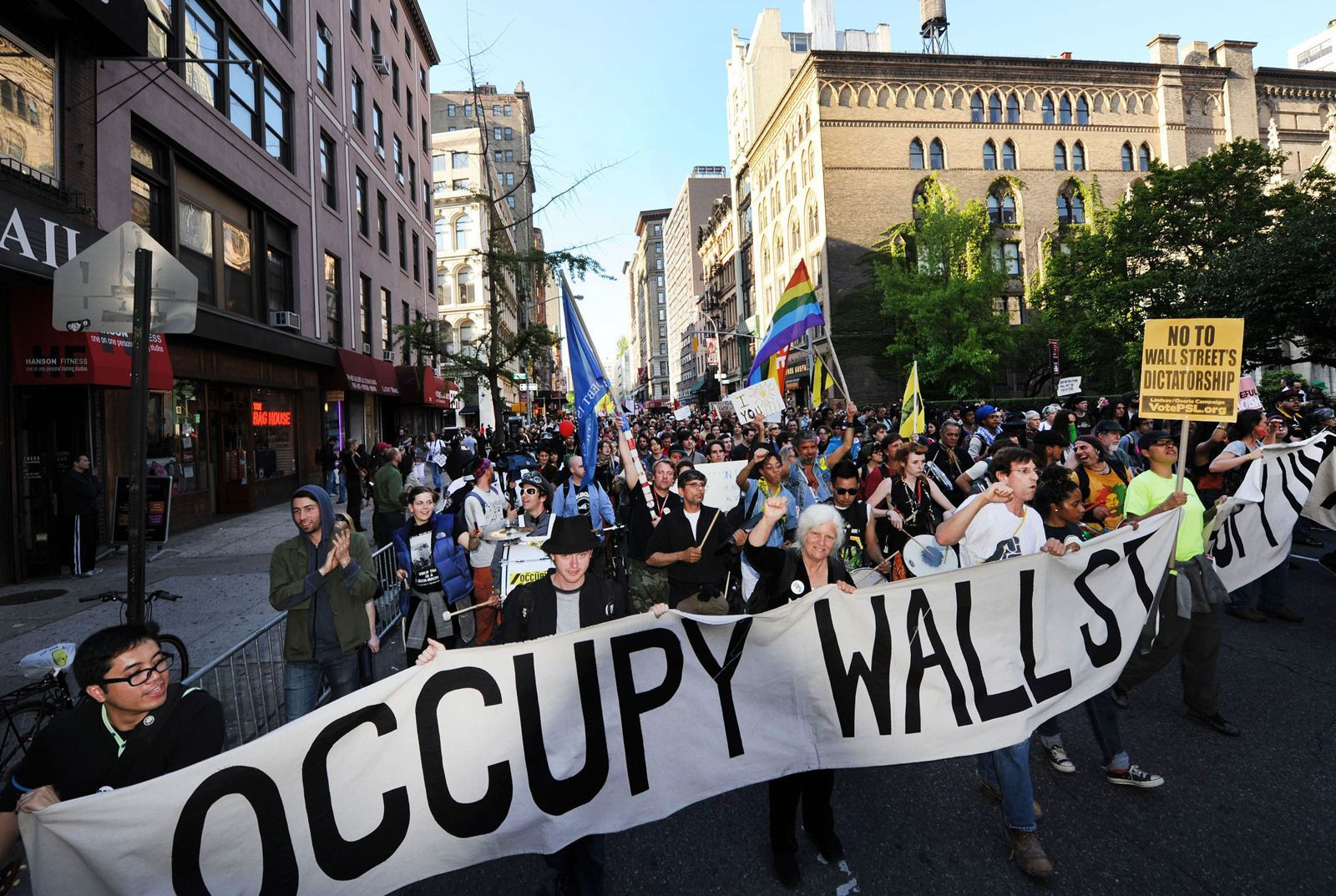The Occupy Wall Street Movement, also known as OWS, was a significant socio-political protest that began on September 17, 2011, in New York City’s Financial District. This demonstration, lasting until November 15, 2011, became a focal point for growing discontent over economic inequality and the perceived corruption within corporate law and the financial sector in the United States. Occupy Wall Street was pivotal in shifting public discourse, bringing wealth disparity into mainstream American political conversation and inspiring a wave of similar protests globally.
The Genesis of Discontent: Background to Occupy Wall Street
The seeds of the Occupy Wall Street movement were sown in the aftermath of the severe financial crisis of 2007–08 and the subsequent Great Recession. This economic catastrophe led to a significant decline in living standards for many, especially younger generations, while simultaneously exacerbating the already widening gap between the wealthiest and the poorest segments of American society. Public anger was particularly directed at the U.S. financial industry, perceived to be at the heart of the crisis. Despite their central role in the economic meltdown, financial leaders largely avoided criminal prosecution, fueling public resentment and a sense of injustice.
The concept for Occupy Wall Street originated from discussions between Kalle Lasn and Micah White, leading figures at Adbusters, an anti-consumerist magazine. Inspired by the mass protests in Tahrir Square during the Egyptian Revolution earlier in 2011, Lasn and White envisioned a similar demonstration targeting the financial heart of America. Lasn registered the domain OccupyWallStreet.org in June 2011 and set September 17th as the protest launch date. An announcement via Adbusters email in July quickly gained traction on social media platforms like Twitter and Reddit, indicating substantial public interest. By August, experienced organizers in New York City, many identifying as anarchists, formed the New York City General Assembly (NYCGA) to organize and guide the burgeoning protest.
Occupation and Evolution at Zuccotti Park
To evade preemptive police action, the exact location of the protest remained undisclosed until the morning of September 17th. Finding their initial target, the Charging Bull statue near Wall Street, heavily barricaded by law enforcement, NYCGA scouts redirected demonstrators to Zuccotti Park, a privately owned public space nearby. Starting with small groups to avoid drawing immediate attention, approximately 1,000 protesters converged on Zuccotti Park. Around 300 individuals stayed overnight, marking the beginning of the physical occupation.
Over the subsequent 58 days, Zuccotti Park became the epicenter of the Occupy Wall Street movement. The number of resident protesters fluctuated between 100 and 200. The encampment evolved into a self-sustaining community, offering free meals, wireless internet access, and even a lending library staffed by volunteer professional librarians. Local residents and businesses contributed essential amenities like bathroom access and laundry services. The daily operational cost of this evolving protest camp reached around $1,000, easily covered by the more than $5,000 in daily donations from supporters.
The Occupy Wall Street protest acted as a catalyst, inspiring similar “Occupy” movements and encampments across the United States and internationally, collectively becoming known as the Occupy movement. Some of these sister protests grew larger and lasted longer than the original New York City occupation; for example, Occupy London expanded to multiple sites, with the last encampment persisting until June 2012. The global movement reached its peak on October 15, 2011, with a worldwide “Day of Rage” that saw demonstrations in over 900 cities.
Initially, New York City Mayor Michael Bloomberg indicated tolerance for the Occupy Wall Street protesters, stating on October 10th that they were welcome to remain in Zuccotti Park indefinitely. However, this stance shifted. On October 14th, Brookfield Properties, the park’s owner, announced plans to clean the park and requested police assistance to remove protesters temporarily. Activists responded by cleaning the park themselves, leading Brookfield to initially back down.
 Zuccotti Park Occupy Wall Street Encampment, NYC, 2011
Zuccotti Park Occupy Wall Street Encampment, NYC, 2011
However, in the early hours of November 15th, the New York City Police Department raided Zuccotti Park, forcibly removing the protesters and arresting approximately 200 for noncompliance. Mayor Bloomberg cited escalating public health concerns as the reason for clearing the park. While lawyers for the protesters briefly secured a temporary restraining order, a judge ultimately ruled in favor of the city. Protesters were allowed to return to Zuccotti Park, but under strict conditions prohibiting tents and sleeping bags, effectively ending the encampment phase of Occupy Wall Street.
“We Are the 99 Percent”: The Enduring Slogan and Message
Despite the end of the Zuccotti Park occupation, Occupy Wall Street achieved significant success in reshaping the national conversation around economic inequality. The movement effectively articulated its message through the powerful and simple slogan, “We are the 99 percent.” This phrase highlighted the vast wealth disparity between the top 1% of wealthiest Americans and the remaining 99% of the population. The slogan resonated deeply with a broad segment of the public and became a defining message of the movement, persisting long after the physical protests subsided. Occupy Wall Street protests continued sporadically in subsequent years, particularly on symbolic dates like September 17th anniversaries and May Day, the international workers’ rights day.
The Lasting Impact and Legacy of Occupy Wall Street
The energy and momentum generated by the Occupy movement had a tangible impact on subsequent activism and political discourse in the United States. It is credited with galvanizing resistance against projects like the Keystone XL oil pipeline, injecting new vigor into the environmental movement. Furthermore, Occupy Wall Street inspired fast-food workers in New York City to strike for better wages, which grew into a nationwide campaign for a $15-per-hour minimum wage.
 Occupy Wall Street march in Lower Manhattan, May 2012
Occupy Wall Street march in Lower Manhattan, May 2012
Perhaps most significantly, Occupy Wall Street fundamentally reshaped the Democratic Party platform. Income inequality became a central issue in the 2016 and 2020 presidential primaries, demonstrating the lasting influence of the movement on American political priorities. Occupy Wall Street, though relatively short-lived as a physical occupation, left an indelible mark by bringing the issue of economic inequality to the forefront of public consciousness and inspiring ongoing activism for social and economic justice.

